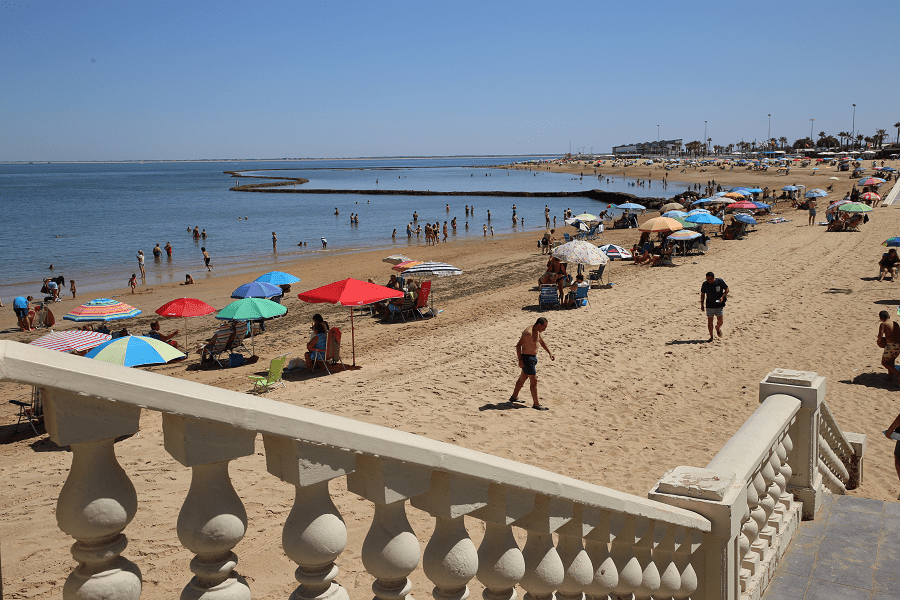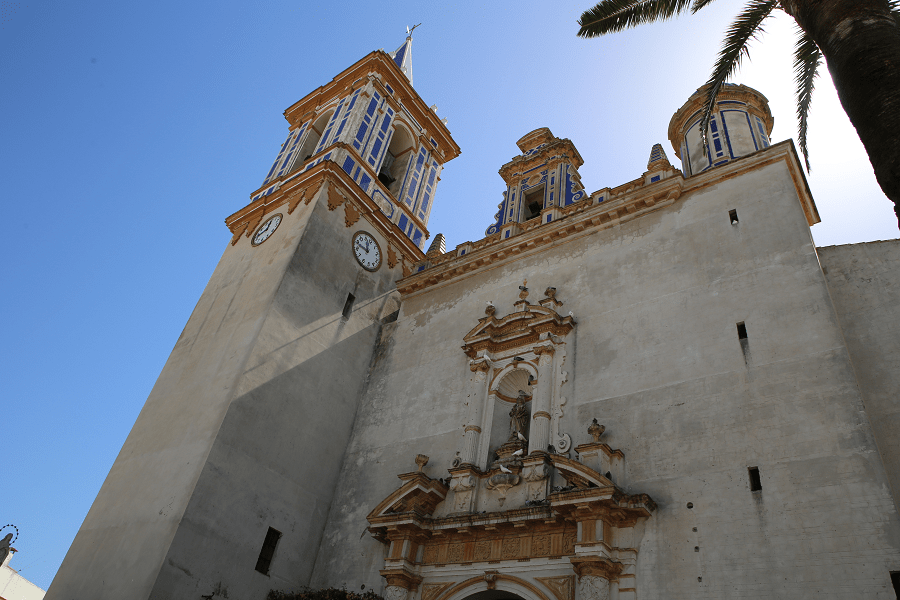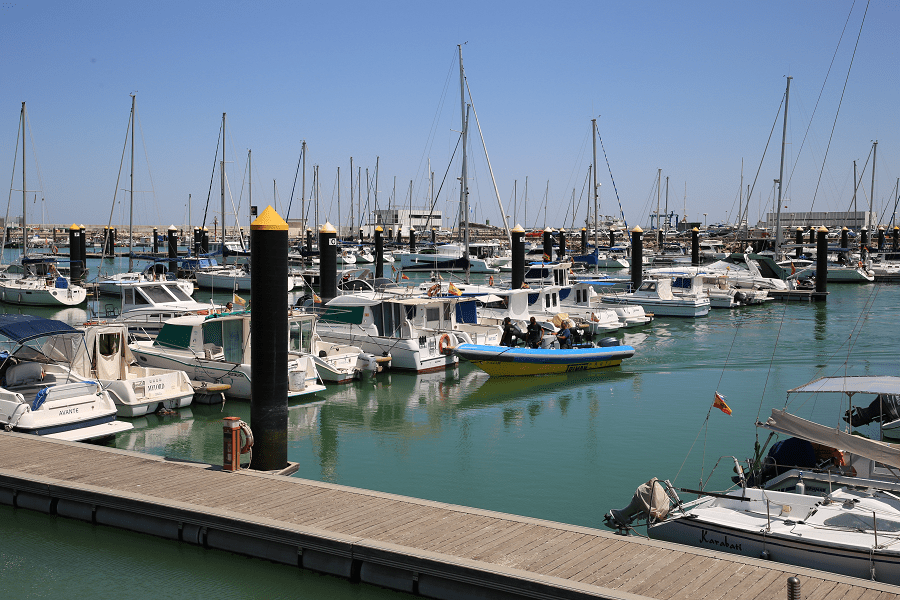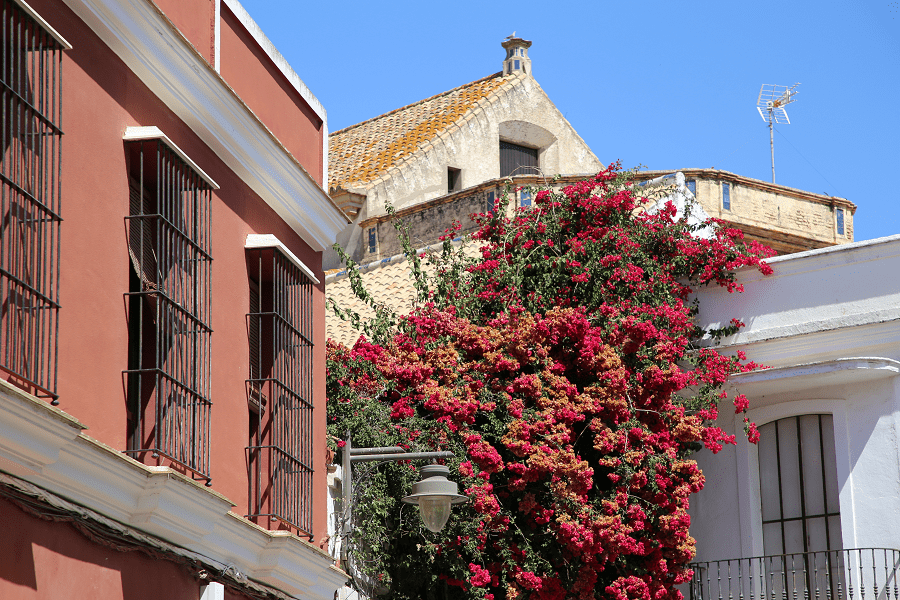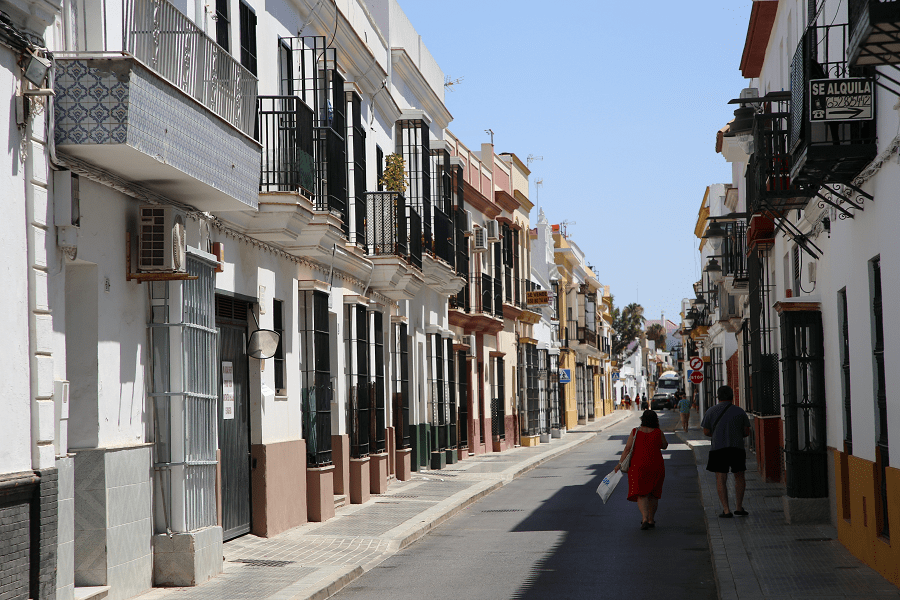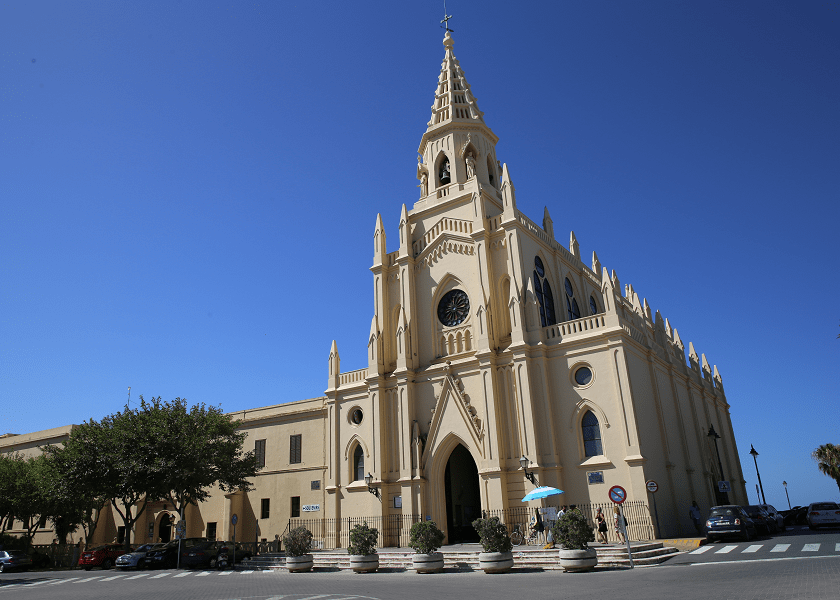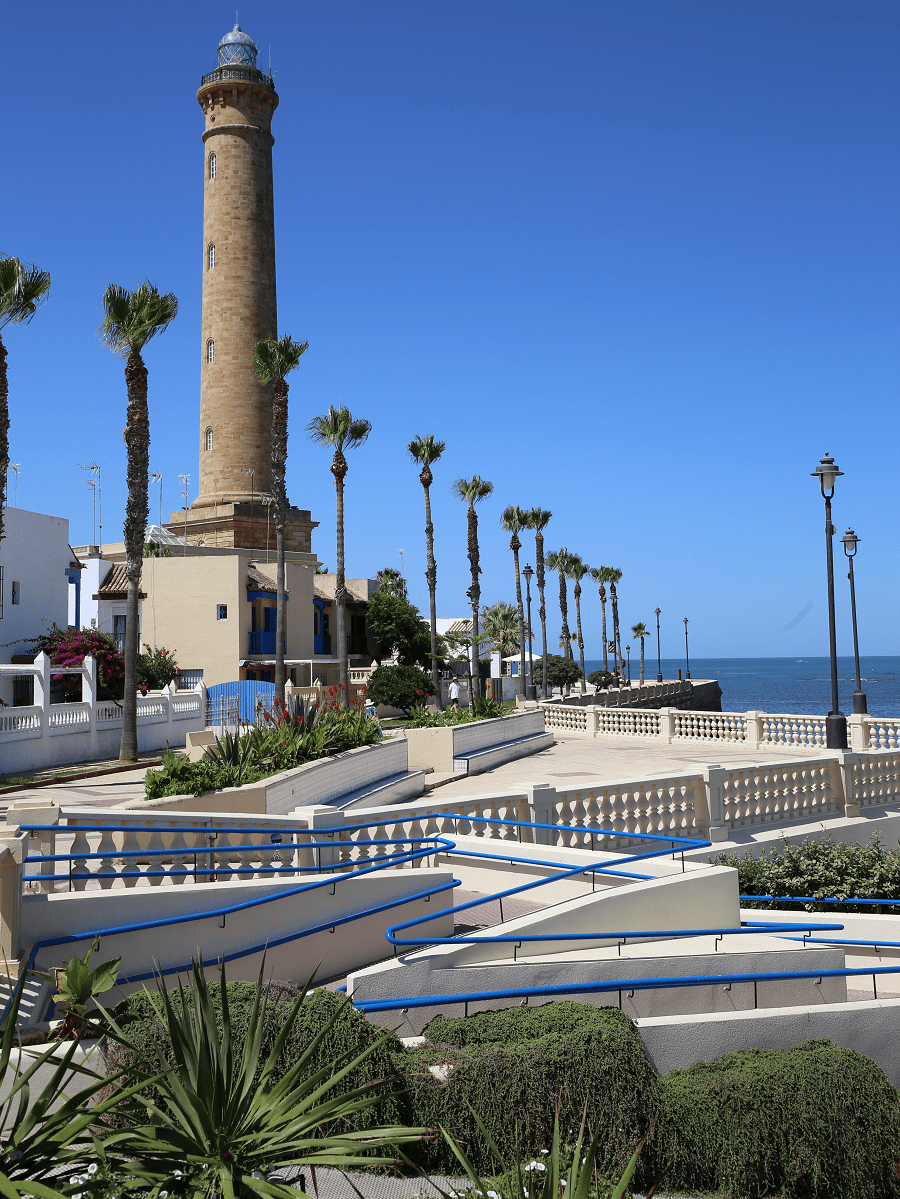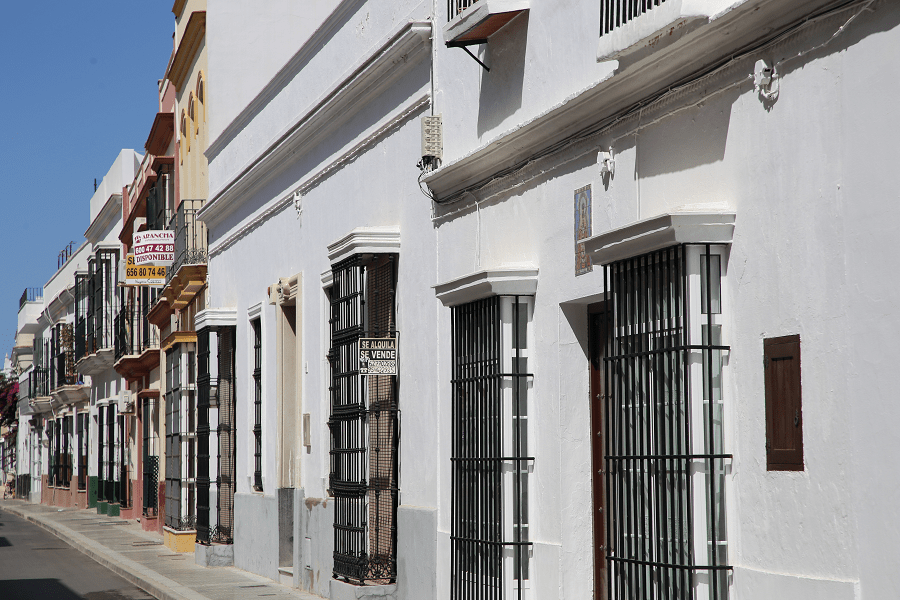Chipiona is a municipality and city located in the province of Cádiz in Spain, in the autonomous community of Andalusia. The town is located on Atlantic ocean, between the towns of Rota and Sanlúcar de Barrameda and 60 km from Cádiz, capital of the province.
It’s a popular part of the Costa de la Luz of the Atlantic resorts of Spain.
Chipiona is also home to the tallest lighthouse in Spain and the third tallest lighthouse in Europe. The town is also well known for several varieties of Moscatel.
Tourism and main attractions
The Chipiona lighthouse is the most emblematic monument of the town. It is the largest lighthouse in Spain, the 3rd in Europe and the 5th in the world. Its height from the base is about 69 meters, dates from 1867 and is located in the Punta del Perro. It was built to warn ships away from the large rock, Piedra de Salmedina. Despite the lighthouse´s presence, this rock has been responsible for many wrecks over the years.
A previous lighthouse was present at the same site from the Roman period, and this former lighthouse gave Chipiona its name. This superb lighthouse was, according to Strabo comparable with the famous Lighthouse of Alexandria. It was ordered to be built in 140 BC by the Roman proconsul Quintus Servilius Caepio in an attempt to finally overcome the problems of the Salmedina reef at the mouth of the then river Betis, now the Guadalquivir. Its Latin name Turris caepionis (Caepio’s Tower), is traditionally held to be the origin of the name Chipiona.
The light characteristic displayed is one white flash every ten seconds (Fl W 10s). the light is displayed at a focal height of 69 m and it is visible for 25 nautical miles (46 km).
The Marina: early 90s took out the construction of the Marina, located near the mouth of the Guadalquivir, in 2008 is subjected to a process of enlargement.
The Shrine of Our Lady of Regla: The current building of the shrine dates from the early twentieth century, built by the Franciscan missionary community, with the help of the Duke of Montpensier. It originated in an ancient castle fortress of a fourteenth century family (propiedad Ponce de Leon), who donated it to the hermits of St. Augustine in 1399 to convert it into a church.
Castle Chipiona: the castle has undergone various modifications that have altered its original appearance. It hosts a Tourist Interpretation Center dedicated to the historical relationship between Cádiz and the New World and to the celebration of cultural events, managed by the Chipiona City Council. It is considered an Asset of Cultural Interest since 1985.
La Cruz de Mar – an iron sculpture of a cross on a stone base, located on the sea promenade at the end of Calle Isaac Peral. It commemorates a terrifying earthquake that centred on Portugal in 1755, and touched Chipiona by sea, however it caused little damage. The monument was rebuilt in 1878 and renovated in 1910.
Muscat Museum: Opened in 2012. Located in the Cooperative Agricultural Catholic.
Cuisine and restaurants
Chipiona produces a wide variety of products, from fish and crustaceans to fruit and vegetables. Shrimps are farmed in the rivers and the area yields huge white claw crabs. Chipiona is famous for its lobsters and nowhere in Spain will you find lobsters quite like here. There is plenty of activity down at the seafront, particularly during the summer months with bars, Mediterranean seafood restaurants, ice cream parlours and fun-filled entertainment for the whole family.
Main agricultural products include: wine growing and tomatoes. The area produces sweet Moscatel wine, sherry and wine vinegar. The tradition of winemaking dates back some five centuries where muscatel grapes have continued to grow in a mixture of clay and sand, producing a much sought after quality and flavour.
There is one Michelin list restaurant in the city:
Casa Paco, Puerto Deportivo de Chipiona, 33 – 100 EUR • Seafood
Beaches
Chipiona boasts some beautiful beaches, frequented by many people living in and around Seville. However, the area is gradually opening up to international tourism.
The most famous beaches are Playa de la Regla and Playa del Camarón to the east of Chipiona. The coast stretches over some seven miles and has many other superb beaches of fine white sand and some are awarded blue flags by the European Union for their high standards of facilities and cleanliness. Surfing, sailing, kite surfing and windsurfing are also popular activities in the area and the waves and large stretches of beaches are ideal.
Its municipal term has a coastline of 12.6 km in length, 7.6 of which make up five main beaches:
Montijo-Niño de Oro beach: it is located between the municipality of Sanlúcar de Barrameda and the Fishing-Sports Port, it has a length of 3.6 km.
Cruz del Mar-Las Canteras Beach: Located between the Fishing-Sports Port and the Lighthouse. With a length of 1.5 km. This beach has been awarded since 1993 with the Blue Flag of the Clean Seas of Europe, with a hiatus for works in the construction of a new Promenade in 2008 and 2009.
Rule Beach: It is delimited by the Lighthouse and the Camarón beach, it has a length of 1.7 km. Due to its proximity to the urban area, it is a very busy beach and possibly the most emblematic of Chipiona. Since 1989, it has held the award of the Blue Flag of the Clean Seas of Europe without interruption.
Camarón-La Laguna beach: delimited by Playa de Regla and Las Tres Piedras, between the tip of Cuba and that of Camarón from which it receives its name. Its total length is 2 km. It has elevated paths to access it that try to preserve the cordon of dunes that surrounds it, a natural habitat for the chameleon and an interpretation center. Since 2006, it has obtained the award of the Blue Flag of Clean Seas of Europe.
Tres Piedras-La Ballena beach: it is the southernmost beach of the municipality, it has a length of 2.4 km, it is adjacent to the municipality of Rota. Its natural borders are delimited by the Río Nuevo stream between the municipality of Rota and Camarón beach.
How to get to?
From Seville 1 hr 32 min (111 km) via AP-4 and A-471
From Cadiz 48 min (53.1 km) via A-491
From Madrid 6 hr 16 min (637 km) via A-66 and A-5
Main information
Area: 32 sq. km (municipality)
Coordinates: 36°44′09″N 6°26′05″W
Population: 19 246
Languages: Spanish
Currency: Euro
Visa: Schengen
Time: Central European UTC +1
See here best sea and ocean resorts of France and Spain (223 objects)





